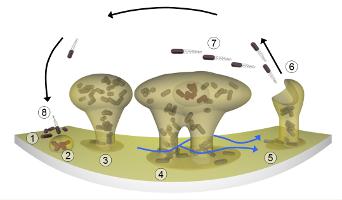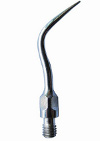Sonic Probe Postdoctoral Research
Synopsis of the project
 Bacterial biofilms are a persistent factor in causing and prolonging infection in the mouth. This research will
target its removal through a new generation of dental instruments that will use cavitation to disrupt the
biofilm.
Bacterial biofilms are a persistent factor in causing and prolonging infection in the mouth. This research will
target its removal through a new generation of dental instruments that will use cavitation to disrupt the
biofilm.
This work has direct relevance to patient treatment and the commercial development of new
instrumentation. New clinical devices will be designed using the specialised technology developed
from our research, to successfully overcome the challenges of removing deposits from teeth whether
outside (the tooth root surface or implant surfaces) or inside (the root canal).
Disruption of bacterial biofilms on teeth will provide a tremendous clinical advantage in treatment,
leading to a new range of instruments, which can be extended to cleaning hard to reach places. The
results have the potential for non-dental applications where the removal of and
prevention of regrowth of the biofilm is paramount to success.

The aim is to fully understand the biophysical effects caused by current and new ultrasonic
clinical instruments, specifically cavitation and acoustic streaming and how it can be used to disrupt
and remove bacterial biofilms from teeth and dental implants. The adherence of the biofilms as well as
its removal will be quantified and instruments modified to optimise the removal.
The research builds on an existing strong partnership between the Universities of Birmingham (Dentistry) and Bath (Chemistry), which bridges the interdisciplinary boundary between oral sciences and chemistry. A postdoctoral researcher from each site will work closely together.
Roles at each site
Develop an in vitro model to demonstrate the oscillation and movement patterns when an
ultrasonic probe is in contact with the tooth surface. (Birmingham)
Predict the effect of tip design by quantifying cavitation and its spatial distribution using such
an in vitro tooth model. (Bath)
Measure the adherence of the biofilm to tooth and related surfaces at various stages of growth
to compare with the forces generated during acoustic streaming. (Bath)
Produce a suite of new designs of instruments that will lead to commercial development. (Both sites)
Experiments to be performed at Bath include:

High-speed photography will map the cavitation and provide an understanding of the behaviour of the
bubble activity around the probe as it contacts a solid surface such as a tooth.Cavitation fields and bubble production will be visualised both by conventional video analysis and using high-speed cameras.
Luminol mapping will allow identification of the cavitation and mapping by the sonoluminescence.
The intensity of the ultrasonic field will be plotted using needle hydrophones and will allow correlation with the effect on the biofilm.
A Cavimeter will quantify the occurrence of cavitation occurring around the tip by acoustic
emission.
The ultrasonic probes will be set against differing solid surfaces and a Cavimeter sensor be
positioned over the set up.
There is little current information on the adherence and removal of the bacterial biofilm, which forms prior to calculus formation. This can be quantified by a combination of fluorescent staining and microjet impingement. We will develop an apparatus to perform these experiments.
The removal of biofilms by the associated acoustic microstreaming forces will
be quantified both by amount of material removed and the thickness of biofilm remaining using light,
confocal and scanning electon microscopy.
The measurements will be extended to the removal of artificial biofilms from a solid metal surface such as titanium, which is used in dental implants and other materials such as dental composites.
University of Bath home |
Home |
Work Homepage |
PhD research |
Dental Postdoc |
Sonic Probe postdoc
 Bacterial biofilms are a persistent factor in causing and prolonging infection in the mouth. This research will
target its removal through a new generation of dental instruments that will use cavitation to disrupt the
biofilm.
Bacterial biofilms are a persistent factor in causing and prolonging infection in the mouth. This research will
target its removal through a new generation of dental instruments that will use cavitation to disrupt the
biofilm. 
